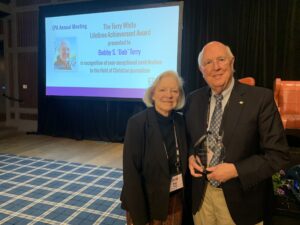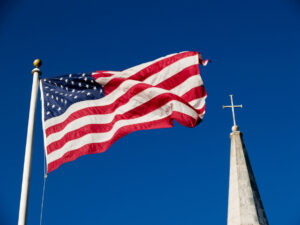
WASHINGTON (BP)–Despite 30 years of legalized abortion and all its consequences, at least some pro-life Americans believe they are winning the battle to restore protection to unborn children.
The Supreme Court’s grant of a breathtakingly broad right to abortion reaches its 30th anniversary Jan. 22. In three decades, more than 40 million babies have been aborted, millions of women have been scarred emotionally, spiritually and physically, and society at many levels has been fragmented.
When the justices voted 7-2 in 1973 to strike down all state laws prohibiting abortion, they did not solve the controversy over the issue and they did not limit the practice. The court’s Roe v. Wade opinion — coupled with its companion case, Doe v. Bolton — resulted for all practical purposes in an unrestricted right to abortion. A woman’s “health” trumped the state’s authority to protect unborn life, the court said, and her “health” included basically any factor, including her emotional state and family situation.
In the years that have followed, abortion increasingly has become a form of birth control and a doorway to growing battles over the right to life at various stages. Among women 15 to 44 years old who have abortions, 48 percent are having at least their second, according to the latest figures from the Alan Guttmacher Institute, a research organization affiliated with the abortion-rights movement. In the wake of abortion’s legalization, pregnancy-interrupting drugs, cell research on embryos, cloning, infanticide, assisted suicide and euthanasia have entered American society as battle fronts on which many lives and much territory has been surrendered.
In spite of this three-decade-long record, pro-life leaders are hopeful.
“I think we are certainly not where I would like for us to be, but I think there has been definite progress, and I think that progress is accelerating,” said Richard Land, president of the Southern Baptist Ethics & Religious Liberty Commission. “I think there is every reason to believe the pro-life movement has yet to crest. It is still on the ascendance.
“I would say that we are slowly but surely winning the struggle for the hearts and minds” of Americans, Land said.
The evidence Land and others point to for their optimism includes: The growing influence of pro-life voters; strategic pro-life officeholders; the increasingly pro-life sentiments among young people; the widespread distaste for the word “abortion”; and advances in technology.
Pro-lifers “have come to a position where they were a decisive factor in the 2000 and 2002 elections,” Land said, “and the pro-life movement is probably stronger in Congress today than at any point in its history and poised to have unprecedented influence in Congress and the White House and poised to make historic gains in the judicial branch.”
In George W. Bush, the country has probably its most pro-life president in practical terms since abortion was legalized. With a Republican majority since 1995, the House of Representatives continues to be a strongly pro-life institution. The Republicans, definitely more pro-life than the Democrats, have regained the majority, though a narrow one, in the Senate. Pro-lifers hope to enact numerous proposals — including a ban on the grisly partial-birth abortion procedure — this session after being blocked by the Senate Democratic leadership last time.
Bush has nominated to the federal district and appellate courts numerous judges who appear to be pro-life. While the Supreme Court remains wedded to Roe v. Wade, rumors mount of impending retirements. Bush may be willing to put forward nominees who would be votes for overturning the landmark decision.
College students and other young people are more pro-life than their elders, according to opinion polls. That fact seems to have stirred concern among pro-choice organizations.
Abortion-rights groups “say the problem with this younger generation is they don’t know what it is like not to have abortion available,” said Wendy Wright, senior policy director of Concerned Women for America. “I would say that this younger generation knows what it is like to have abortion available,” and they don’t like it, she said, because this generation “knows they are missing siblings, friends, potential spouses, because those people may have been aborted.”
Wright, along with another pro-life leader, Carol Everett, pointed to the recent announcement of a name change for a leading pro-choice organization as proof of the stigma of the word “abortion.” The National Abortion and Reproductive Rights Action League is now NARAL Pro-choice America.
“This proves once again what I have said but what some in the pro-life movement have laughed at … that abortion is such a nasty word that even the abortionists don’t want to use it,” said Everett, a former abortion-clinic owner who became pro-life in 1985 after receiving Christ.
Wright said, “They are running as far as they can from the word abortion. They are running from the one and only purpose for their existence.”
Sonogram machines also have helped further the pro-life cause by demonstrating the real nature of the unborn child. General Electric’s recent television spots promoting its new 4-D sonogram provided compelling proof to millions of Americans of the humanity of the child in the womb.
The sonogram “really has helped to change the debate,” said Wright, who served in various ways with Operation Rescue for five years before moving into public-policy work in the mid-1990s.
In addition, the debate on partial-birth abortion “really changed the tide of public opinion,” she said. “One thing the abortion movement tries very hard to do is keep the debate at the rhetorical level,” such as talking about women’s rights and freedom of choice, she said. When the debate turns to the procedure itself, “we win,” Wright said.
Progress for the pro-life movement has occurred despite the hostility of the national news media and other influence wielders, Land said.
“Historically, the pro-life movement is unlike any other grassroots, social reform movement in our history,” he said. “There has been no other grassroots, social reform movement that had no significant elite in the society supporting it.”
The abolitionist, child labor reform and civil rights movements “all had a powerful elite in society supporting them,” Land said.
“In spite of having all the power elites — educational, legal, media, cultural — against them, [pro-lifers] were galvanized into action” by the Supreme Court’s 1973 decision and grew in influence, he said.
In order to win the battle, the pro-life movement needs to use its language wisely and to experience greater involvement by the church, Everett said. Even pro-lifers need to be careful about using the word “abortion,” she said.
“When you talk about women, that is a winning argument,” said Everett, who is founder and chief executive officer of The Heidi Group, an Austin, Texas,-based ministry to women with unplanned pregnancies. A person who uses the word “abortion” is “judged as irrational. … When you use the term ‘pregnancy termination,’ you do not have the visceral reaction; you are considered rational,” she said. “No woman wants a pregnancy termination; she wants help.”
Churches need to accept that fact and send their members into pregnancy care centers to work three, four or five hours a week, she said.
“When the church recognizes that this is not a political issue but a sin issue and this is a mission field, that is going to make the difference,” said Everett, a member of Great Hills Baptist Church in Austin.
“Ultimately I am excited because we are on God’s side, and he is going to win.”
–30–














